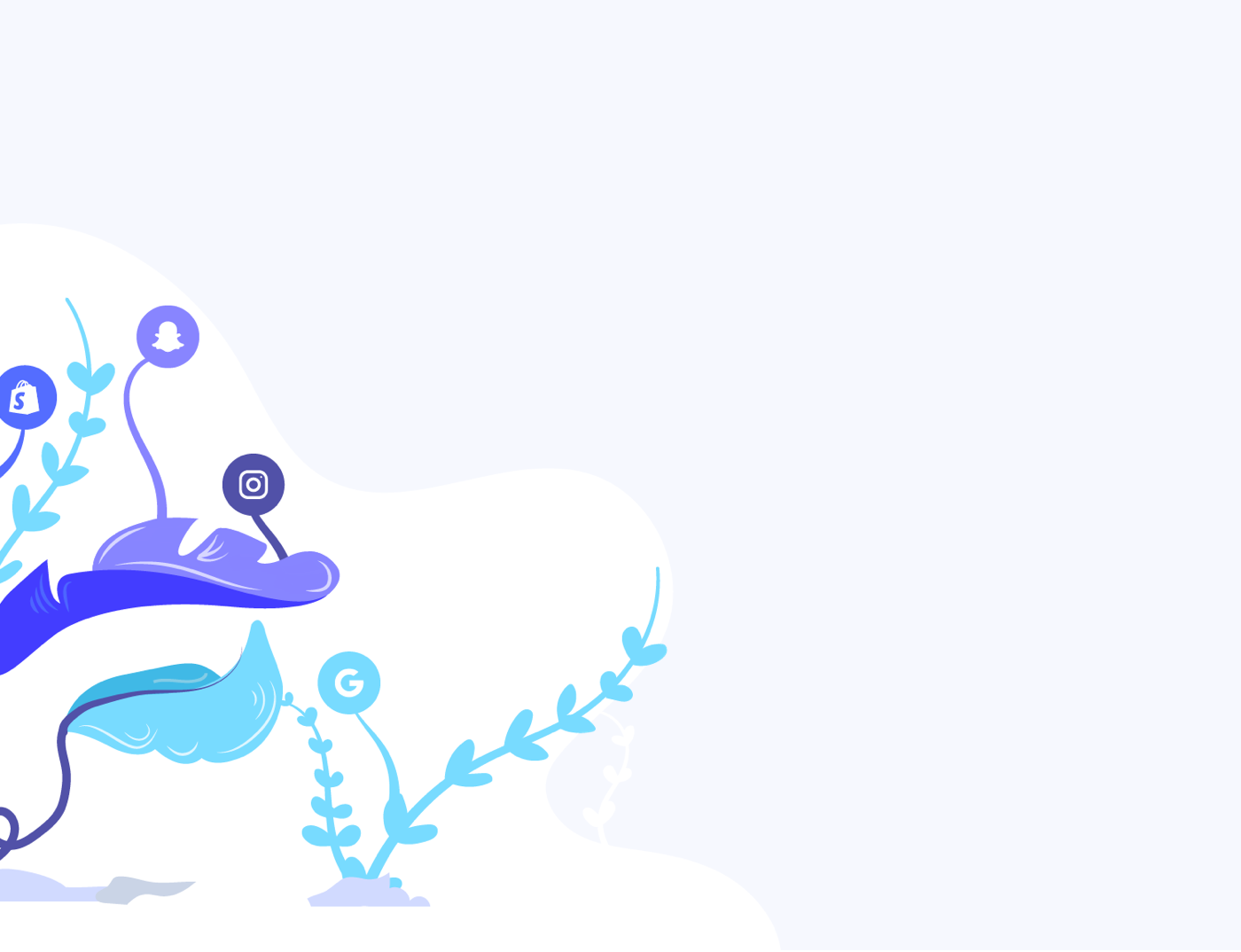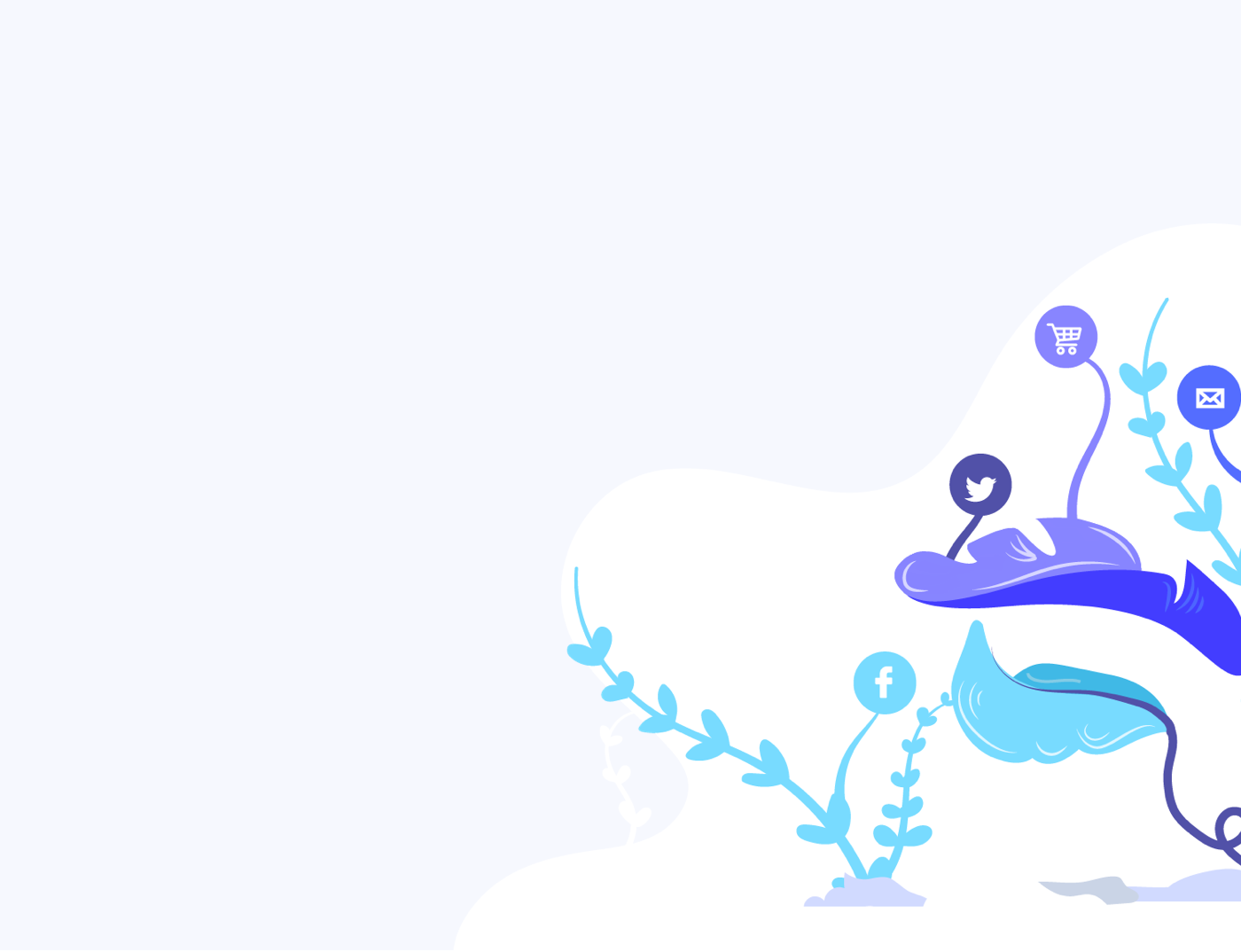Growth hacking . . .
is a business-building strategy that carries out marketing tests rapidly in order to quickly generate the data needed to make informed decisions.
Essentially, it’s an iterative approach to online marketing and driving conversions.
You try a tactic, channel, copy, or creative and see how it does. Then you change it a bit and try it again, working to quickly optimize your marketing as you go.
There are plenty of benefits to growth hacking but they all boil down to this:
With growth hacking, you can achieve more marketing success for less money, faster, compared to traditional digital marketing.
Since the focus of growth hacking is on improving what you have, rather than increasing investment in what you don’t, it appeals particularly to new businesses and startups, where traditional upscaling of marketing isn’t an option and a low cost per acquisition is absolutely essential.
If that thought appeals to you, you’ll find all the tools and strategies you need to actually do it throughout this guide. There’s no fluff and no BS – just the actionable tips you need to put growth hacking to work for your business today.
Let’s get hacking!
General Business Growth Hacks

1. Over Deliver
This is the easiest hack to apply to any business – whether or not growth is your goal.
Whatever it is you’re aiming to deliver, over-deliver on it. A study in Journal of Applied Psychology found that waiters who went back to their tables with a second round of mints increased their tips by 23%.
Reassure your customers they made the right choice, and make them love you. You reduce buyer’s remorse and increase affection – and the more they love you, the more they’ll spend.
Over-delivering might be a bit harder for some businesses outside of the food industry, but there’s always a way:
- If you’re a service provider, deliver projects a day ahead of schedule.
- If you run an ecommerce site, include a little something in your packages that you send. A 10% off voucher, a gift card, even a mint – just to say thanks.
- If you’re a store, keep a jar of chocolates by the cash register and encourage people to take them. The cost to you is tiny, but who doesn’t love chocolate?
All it takes is something small to confirm to your customers that yes, they made the right decision.
2. Get the Email – Everything Else Comes Later
It’s great to have lots of information about your customers, but the quickest way to lose a potential lead is to ask for a million pieces of info up front.
Instead, focus on getting the email. Everything else can follow as prospects move through your sales funnel.
Take Neil Patel, for example. He removed a field from the sign up form on his Quick Sprout website and saw conversions increase by 26%.
Now, some of his forms are even more streamlined, requiring only an email address:
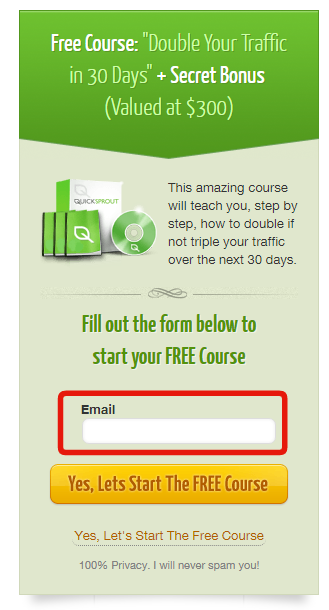
Don’t ask for much up front. Just get a foot in the door and worry about getting to know your customer down the line.
3. Add Exit Pop Ups
Exit pop ups appear right when a customer is planning on leaving your site. It’s a bit like the window that comes up in Microsoft Word, asking you to save your files:

You can re-integrate your customers back into your purchase flow or, better yet exchange some valuable content for their email address.
Gr8Fires.co.uk used one to achieve a 300% increase in monthly sales leads.
How?
They used an exit pop up to offer customers a free calculator (in exchange for an email), telling them how much it would cost to install a fireplace.
Installation cost was a major pain point for customers, so by offering them a solution to their problem, Gr8Fires was able to capture the information they needed to turn a browser into a lead.
When it comes to exit pop ups, it’s important to do what Gr8Fires did and be genuinely helpful to your customer. If you’re just saying “Are you sure you want to leave?” you’re simply creating a roadblock between where your user is and where they want to go.
But if you’re saying “We also have this solution, maybe you’d be interested!” then you’re adding value to the customer journey – value that’s going to translate into sales.
4. Write in a Helpful Tone (Not a Salesy One)
There are two ways to market something:
- Push marketing that’s salesy and convincing
- Pull marketing that’s so helpful and kind that you naturally pull customers in
Change the tone of your copy from a push to a pull. An A/B test comparing the tone of two marketing emails for an e-retailer found that with a pull tone, they could drive 349% increase in inquiries, from 1.58% to 7.08%.
Be helpful to your customers. People respond to helpfulness; not so much to aggressive sales tactics.
5. Use Referrals
Referrals can be growth’s best friend, and incentivized referrals can be outrageously effective.
Think about it…
Who are you more likely to listen to? A company you’ve never heard of, or a company you’ve never heard of that your best friend is telling you is awesome?
One of the most successful referral campaigns ever comes from back in the early days of Dropbox. At the company’s start, people who signed up to Dropbox and recruited another user were given an additional 500MB of free space.
This simple incentive increased sign ups by 60%.
People will listen to their friends before they listen to you. Don’t see this as a barrier – see it as an opportunity.
6. Experiment with Enriched Content
Enriched content is what happens when you offer some content for free (e.g. a blog post) and then offer additional, enriched content of even greater value in exchange for something (usually an email address).
For example, if you were a personal finance company, you might write a blog post titled “5 Great Ways to Save Money at the Supermarket”.
But if you wanted to amp up the wow factor and drive email sign-ups, you might also offer readers the chance to download free guides like “11 More Fantastic Money Saving Foods” or “A Guide to Eating Cheap (without Skimming on Quality)” in exchange for their email address.
The key here is that the add-on content – the enrichment – is relevant to the original content, but still adds value.
A customer who’s already interested enough to read your first post will be more likely to click through and give you something in exchange for the opportunity to read more.
Tier your content strategy. Prospects are usually willing to engage more for more valuable pieces.
7. Spread Your Sign-Up Process Over More Screens
This was a surprising one for me, as cutting your ecommerce checkout length can result in higher conversions.
But sometimes, spreading it out actually leads to better results.
During the 2012 presidential race, the PAC Obama for America worked with Optimizely to drive donations.
Interestingly, they found that if they split their donation form across multiple screens, they could increase conversion by 5%.
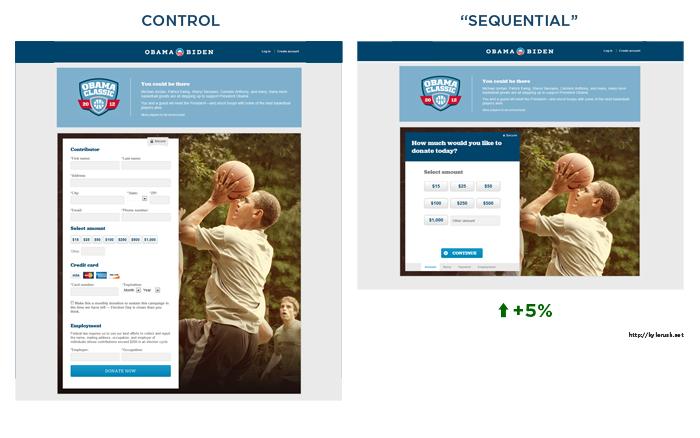
Let me be clear. They didn’t reduce the amount of information collected – they just spread it out.
Try the same thing with your sign up or opt in process. Age-old wisdom like ‘reduce the number of clicks to as few as possible’ isn’t always correct. But the only way to find out is to test something and see if it works.
8. Piggy Back Your Offering on Another Network

If you’re a new company with zero market share, consider jumping onto an existing platform for a bit, rather than clawing up user by user.
You’ll get exposure to millions of users right away to give your business the kickstart it needs.
AirBNB did this when they first started by creating functionality for their users to push their ads to Craigslist, providing new hosts with far more exposure than the platform had on its own, as well as building awareness of the new platform among renters.
There are lots of giant networks and potential partners for your business out there. If you can use them, you can tap into millions of users extremely quickly.
Ecommerce Specific Growth Hacks
You’ve got your ecommerce site. You’re driving solid traffic, have good on-site activity, and pretty low abandonment.
But you’re not selling anything.
Sound familiar? It should – a huge number of sites struggle to drive conversions and can’t seem to figure out why.
Enter growth hacking. This section is all about making incremental improvements to every stage of your sales process to drive more sales online.
From getting people onto your site using images to reducing cart abandonment with live chat, you’ll find all sorts of hacks you can implement today, tomorrow, and down the road.
Of course, I recommend testing each of these to see what works for you. After all, 10 data points is worth far more than 10 best practices.
Happy hacking!
9. A/B Split Test Your Buttons
Your call to action is the most important part of your lead generation process. Constantly test new styles, colors, and copy combinations – what works for one company might not work for another.
Take Profitworks, for example, who found that just changing their button color increased click throughs by 14.7%.
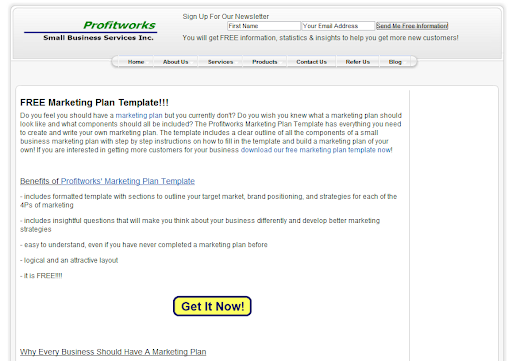
Always be testing. Unless you test something, you have no idea how it’s going to play out, and you could be inadvertently leaving piles of money on the table.
10. Increase Prominence of Free Shipping
People love free shipping. They go bananas for free shipping. They’ll pay more for a product… if shipping is free.
Use that, and make sure you tell people about it. This hack is super easy – just increase the prominence of your free shipping labels:
- Add them to your product pages
- Add them to your cart, so every time the user checks what they’ve got in there they see them
- Add them to your home page and any landing pages you’re sending paid traffic to
11. Change Your Products Per Page Defaults
How annoying is it when you search something that returns 400 results but the page only displays 20 per page?
Sure, increase the max per page can help – but why not go all the way and change your default to the maximum number?
One less click for the customer, and perhaps more sales for you.
12. Use Images to Drive Your Site
Images are absolutely essential to your website.
Do you remember what AirBMB was like pre-spring 2010? Don’t worry, neither does anyone else.
That’s when the founders flew to New York and went door to door taking professional photos of hosts’ places.
AirBNBs that had decent pictures got 2-3 times as many bookings. By the same time the following year, thanks to their investment in high quality imagery, AirBNB had grown by 800%.
The same thing applies to your site.
First, get some quality pictures of your products. Then, put them on your home page.
Take Williams-Sonoma, who uses a huge image on their homepage to effortlessly hero a product:

Such a brand-driven image might not be appropriate for your business, but there are other ways you can include images on your home page (even if it’s just as product thumbnails).
13. Set Your Filters
Users hate when they can’t easily filter your filters. What if you sell jeans, and someone want to see a specific cut in a specific size in a specific brand?
Make sure they can do that. Asos.com is a brilliant example:
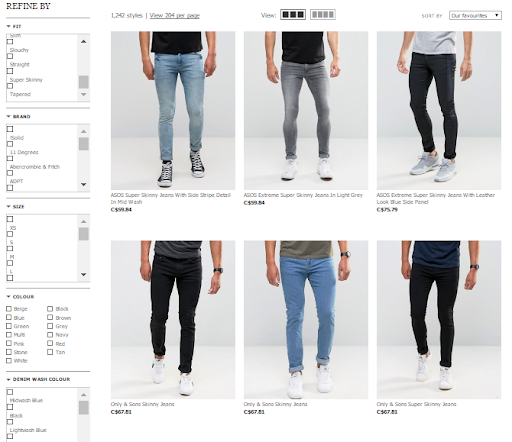
Clean and simple. It’s an absolute pleasure for the user to narrow down what they want from a product.
Granted, this sort of functionality can be hard to implement. One quick win is to increase the prominence of whatever filtering functionality you do have. This will help you discover whether it’s worth investing more money into filtering down the line.
14. Simplify Billing/Shipping Address Pages
Set the box for ‘same’ to be ticked by default and hide one of the fields. For the vast majority of customers, these are going to be the same – why overwhelm users with duplicate fields?
Less for the customer to do, less visual clutter, and more sales for you.
15. Make Your New Products VIP Exclusive
It’s like a soft open, but online.
First, tell everyone about your upcoming new products: email marketing, promo banners on your site, programmatic display ads – the works.
Then, use these channels to drive people to a dedicated landing page where they can sign up for exclusive VIP early access.
Develop specific marketing for your new sign-ups to build the hype; for example, by rewarding sharing across a social network to help your launch grow even bigger.
Finally, give your loyal VIP customers early access. A week, a month – it doesn’t matter, so long as it’s clear that they’re getting access before the masses.
16. Add a Progress Bar to Your Checkout Process
It’s easy to get frustrated with a check out process when you don’t have any idea when it will end. Many of us will just walk away. Maybe that’s why cart abandonment hit 74% in 2015.
Adding a progress bar showing where the user has been and where they still need to go is a surefire way to reduce that number.
17. Add a Live Chat Feature
While technically simple, thanks to the sheer number of live chat SaaS companies out there, it can be expensive.
However, adding a live chat feature is also devastatingly effective.
Depending on what source you consult, you can reasonably expect a 10-30% uplift in conversions from live chat alone.
18. Hero Your Product Reviews
The goal of this growth hack to make people even more aware of your product reviews.
First, increase how visible they are on your product pages. For example, if they’re way down the bottom in a separate tab, move them.
Amazon does a pretty good job of this by making the aggregate value clear and making it easy to get to more in-depth reviews.

Another option is to use a tool like Fomo, which allows customer reviews of products to pop up in real time on your site as the person browsing is looking at products, adding urgency to the power of social proofs.
19. Make Purchasing Urgent
Speaking of urgency, there’s another easy way to drive purchases – whenever you’re about to run out of something, put that on your site.
Booking.com does this exceptionally well:
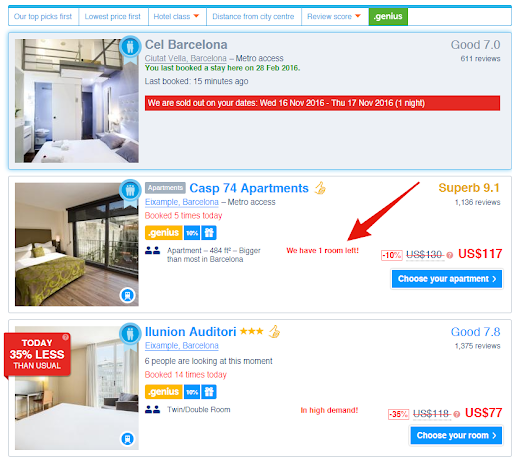
By saying “We’ve only got one left!” you activate FOMO – fear of missing out.
“What if someone else books that room and THERE ARE NO HOTELS LEFT FOR ME!!??”
That urgency is what you’re going for. Booking.com actually takes it one step further by showing places that are already sold out; which, if you decide to give this hack a try, is definitely worth testing as well.
Email Hacks
Email continues to hold its own against the tidal wave of new communication technology, remaining one of the true workhorses of digital marketing.
Want yours to work better?
I do too.
The following hacks will help you acquire, keep, and engage with your subscribers and customers over email. From how to write a great subject line to increasing your email open rate by 30%+ in just two minutes, I’ve identified the following hacks that’ll give you the biggest bang for your buck.
20. Add a Modal Window on the Homepage
A modal window is among the best ways to capture an email.
Modal windows appear after a visitor has spent a certain amount of time on a page or has reached a certain point in a page, interrupting the user and asking for an email.
While this will likely improve your email sign up, be warned – overuse can have a serious impact on your user experience.
Proceed with caution, because some users find these things downright infuriating!
21. Subject Line Hack: A Quick Question…
There’s literally a mountain of information on subject line writing out there, plus plenty of tools that’ll help you craft killer subject lines.
And of course, you always want to A/B test the hacks you try, but one easy place to begin is with a ‘quick question.’ This subject line hack piques curiosity, is nice and short, and isn’t spammy or invasive at all, making it well worth a try.
EX: “A quick question on your marketing ROI…”
22. Subject Line Hack: Personalization
There are fewer places where personalization will take you further than in personalizing a subject line.
In fact, an Experian report from Q1 2015 found that personalization improved unique open rates by an average of 29.3%. In travel and consumer products and services, that average increases to 41.3%.
EX: “[First name], special deals picked just for you”
23. Send Email from a Person
This one’s quick and easy – just start sending email from an actual person, not from an info@ address or any old account.
We often forget that email wasn’t actually developed so we could hock products – it was designed as a two way communication channel. The closer to that original objective you can get (by putting a name to your email account, for example), the better your open rates will be.
24. The Double Open
Noah Kagan came up with this brilliant and outrageously simple hack that could increase your open rates by 30% or more.
First, you send an email (all normal so far…).
Then, you send the same email with a different subject line to the people who didn’t open the first email.
For example, Noah Kagan first sent an email with the subject line “10x your email conversions.” As you can see, it did pretty well:
Next, you wait a week.
Now, you send the same email with a different subject line to the people who didn’t open it the first time. As you can see, it’s a relatively strong result:
In Noah’s case, this means that 7,031 more people opened the same email, for no extra work, translating into a 30% uplift in opens compared to doing nothing (like so many marketers do).
25. Tailor Your Marketing Communications Based on Visit Depth
There are a few ways to segment your users by depth of visit, but generally you’re going to base visit depth on either time on site or number of pages visited.
Once you’ve got a metric to judge visit depth, tailor your communication accordingly.
For example, for those who are highly engaged, you could email a special “percent off” offer to push them from browsing to buying.
Similarly, you try sending messages explaining your product range to your less-engaged visitors, introducing them to your brand and building awareness.
Businesses that segmented their email list reported better open rates, more sales, and lower unsubscribe rates:
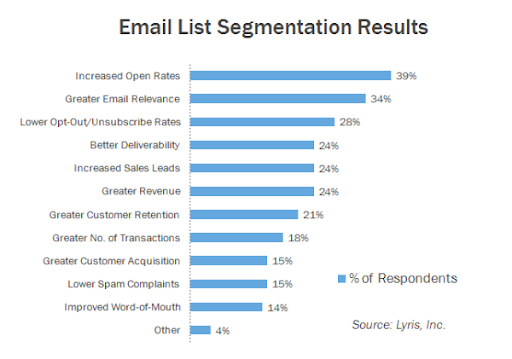
26. Run Drip Marketing Campaigns Based on Specific Customer Behavior
Ok, this one is a little bit more work, but it can be well worth the effort.
The goal is to be running multiple email drip campaigns that your customer are funneled into based on specific behaviour. For example, you might have:
- A welcome campaign for new sign-ups/customers
- A best customer campaign, for the top 10% of your customers
- A X purchase campaign – whatever a common drop off threshold is for you, then base your campaign on that (e.g. a 3rd purchase campaign)
- A win back campaign that targets customers who haven’t purchased anything for a few months
The basic idea is that you can drive better conversions with your customers if you use specific content based on your relationship with that specific customer.
One example of this is TheSkimm’s email marketing. They run an anniversary campaign, emailing their customers when they’ve been subscribed for two years
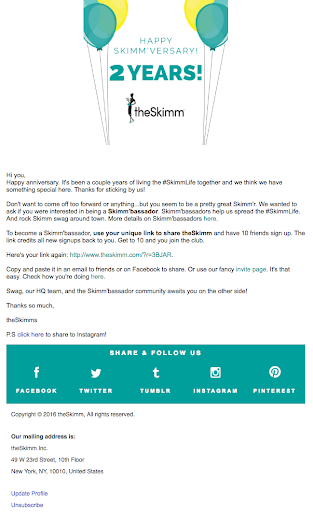
The magic of this is twofold. First, it re-engages a potentially disengaged subscriber in a really positive way.
EX: “Oh yeah, I DO really like TheSkimm! I should start reading that again…”
Second, the CTA in this email is to become a brand ambassador and to share TheSkimm with 10 friends. This is a classic execution of the norm of reciprocity.
By giving someone something, it green lights you to ask for something in return.
By saying “Thanks for subscribing for so long!” TheSkimm is actually giving their customers something, which means they get to ask for something at the same time (in this case, social shares).
Another brilliant example of this hack in action is Dropbox, which emails customers who’ve signed up but haven’t done much with their box:
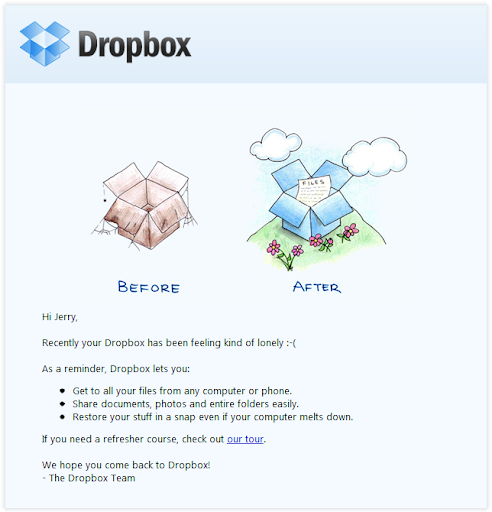
The message is quick, easy, and to the point: you haven’t been using our service, and look at all the cool stuff we can do!
That’s the basic idea of differentiating content depending on segmentation – it’s all about finding something to talk about, and then finding the specific customers you want to talk to, rather than spamming the message out through large general email blasts.
Even better? Most email software providers like Mailchimp have the functionality to automate this.
27. Run an Email Course
The key to marketing is to be useful.
You can extend that logic to email marketing with an email course, through which you walk your customers through a topic that interests them (and that you know a lot about).
Good places to look for topic inspiration include:
- Your analytics – what are people searching for?
- Existing blog posts – what are people really excited to read now?
- Comments and social media conversations – what are your customer or users asking?
Once you have your topic, create the content. First, see if you can repurpose any content from your blog. Then fill in any gaps with new content. Aim for a course that’s 5-6 emails long, and make sure each email should has a unique CTA telling people what to do next.
Finally, get people to sign up to it. Promote it via your existing list for deeper engagement and pump it out with a dedicated landing page and digital acquisition channels.
28. Set up an Autoresponder from the CEO for New Subscribers
Set up an auto responder from a CEO or a founder’s email (set up a special email just for this if you don’t have one already) and set the message to go out about three hours after someone subscribes to your email list.
Generally, you’ll have new subscribers drip fed into other channels, so this probably isn’t the first email they’ll get from your team (hence the three hour delay). The purpose of this email is to:
- Welcome them to the family, and thank them for subscribing
- Put a personal touch on your company – by having it coincide roughly with your other autoresponder messages, you make the message feel more real for the subscriber
- Ask for feedback or a response as your CTA
I’ve found that this kind of email – personal, from the CEO and not salesy – has a much better open rate and engagement than normal hard hitting sales emails.
Wrapping It Up
Growth hacking doesn’t have to be the strict purview of tech startups and companies who have names with the word “Guru” in them.
The principles of growth hacking – testing and iteration, data-driven decision making, and constant optimization through automation – can be applied to anything.
With these hacks you’ll be well on your way to using growth hacking to grow your business like a boss.
Images: Getfere, Gratisography, Lock and Stock Photos, Williams-Sonoma, Amazon.com, Booking.com, Noah Kegan, ConversionXL, Hubspot

